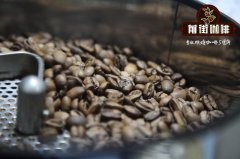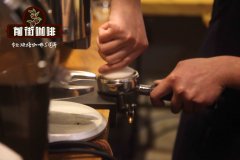Uganda AA- Bugison Bugisu Arabica Water washing Bean grading | Wugar A Water washing, Drugar

Professional coffee knowledge exchange more coffee bean information please follow the coffee workshop (Wechat official account cafe_style)
Uganda AA- Bugison Bugisu Arabica | grading of washed iron cards | different from Wugar A washed and Drugar sun-dried beans?
Uganda, located at the source of the Nile, is a landlocked country in Africa that does not rely on the sea. Although Uganda has a long history of producing coffee like other East African countries, the quality of coffee has never been improved because of the war caused by ethnic antagonism. good coffee is mostly grown in areas adjacent to Kenya, and some good coffee beans are shipped to Kenya to be sold as Kenyan coffee. It was not until the end of the war 15 years ago that Uganda leapt into a fast-growing country of coffee. Uganda is a country with lush green forests, lakes, wetlands and rivers. Coffee is the largest crop in Uganda and earns the most foreign exchange. About 500000 coffee farms are engaged in coffee-related agriculture, accounting for 25% of the total population. Coffee trees are mostly robusta coffee trees, accounting for 94%. Only 6% of coffee is a traditional Arabica tree. These rare coffee beans are grown in tropical rainforests and most of them are exported to countries around the world.
82% of the domestic people depend on agriculture for a living, and most of them are small-scale farmers. Coffee is one of the major agricultural products, accounting for 25% of the export foreign exchange. It is said that in order to improve the quality of coffee beans, coffee farmers must follow the guidelines to cultivate and dispose of coffee beans, and if they break the rules, they will go to prison.
Most of Uganda's coffee is grown by small-scale producers directly on the southern and western slopes of Mount Elgon. Mount Elgon Mt.Elgon-- is located on the border between Uganda and Kenya, while BUGISU Bucky Sue Coffee is grown on Mount Elgon and has special climatic and geographical conditions. However, its export value in the international market is much lower than that of Arabica in Kenya and Tanzania. This is mainly due to the fact that the coffee beans from harvest to processing are not delicate enough, so that the low price but unique African berries and unparalleled spice aromas are the characteristics of Bugisu coffee.
Bugishu, about 5 hours' drive from the capital Kampala; and the coffee distribution town of Bigisu is Mbale, where there are many trader companies and coffee storage stations, so some exporters will mark "Mbale" as raw beans, followed by a series, such as AA or A, but they are actually beans that belong to the Bugishu area. Coffee farmers in Bugishu are called "Shambas". They grow bananas and cassava in coffee trees as food crops. Coffee is almost their only cash income, which is used to cover medical, household and educational expenses. Local small-scale farmers will focus on small-scale washing treatment during the coffee harvest period, and then concentrate on Mbale to sell, and then carry out the latter stage of dry treatment and classification process, and there are larger-scale consistent operation treatment plants and exporters in the capital Kampala.
This batch of Ugandan Bugishu AA is very different from the neighboring Kenyan beans. The acidity is not so bright, and it is not as good as the wine, sweetness and spices that occasionally appeared in the early Bugishu, but the body is as good as the Kenyan beans arrived this year!
Bugishu (or Bugisu), in terms of acid quality, Rwanda is the brightest and lively, followed by Pulong, Uganda has the softest acid, in terms of mellow taste, the three have their own advantages, all of which belong to the excellent bean type of body. And the aroma is the gentlest in Uganda, the most upfront in Rwanda and the most responsible in Pulong, because in terms of the harvest period of 2004-2005, the high-altitude high-quality beans in East Africa are actually very fragrant, and the characteristics of the flavor are also very clear.
The geography and climate of Uganda: Uganda is an inland locked country, not close to the sea, but it has a great lake of Weidoria, neighboring Kenya to the east, Zaire to the west (now the Republic of the Congo), Sudan to the north and Tanzania to the south. Due to the high mountains in the country and the regulation of Lake Victoria, Uganda has a mild climate across both sides of the equator, which is naturally suitable for growing good coffee.
Uganda, the mother of Romsda in Africa, has also produced excellent high-altitude Arabian species in recent years. Romsta coffee was discovered around Lake Weidoria in 1860, and there are still wild species there today.
At the beginning of the 20th century, Arabian species were introduced from Malawi in South and East Africa, while Arabian species were mainly cultivated in Bugishu (along the slopes of the Elgon Mountains) and Wugars. The Arabian species were sold in Bugisu AA, Bugisu A (above washing treatment), Wugar A (washing), and a small amount of sun-dried beans Drugar.
93% of the country's total coffee output of raw beans is used for export to earn foreign exchange (including Arabian and Romanian varieties).
The main harvest period of Arabian species is from October to February of the following year, and the secondary harvest period is in August.
Luo species (north of the equator): October to February; Luo species (south of the equator): may to August
The main varieties planted in Arabian species are: Bourbon and Kent (but in recent years, improved new species have been tested)
Uganda coffee grade is the same as Kenya, AA grade is the best, which represents the coffee bean size is uniform and uniform, but this grading system will vary according to the evaluation of each manor. For example, Manor An is better than Manor B, even if the AB bean of Manor An is also better than the AA bean of Manor B. Coffee is sold through two kinds of pipes: fine products auction and direct sale, if the fineness of the treatment process and the elimination of missing beans are strengthened. It is believed that it can get better sales under the condition of high coffee prices in Kenya and Ethiopia.
Uganda coffee too many defective shell beans and unsuccessfully fermented coffee beans so that the quality can not be improved, can not get a good harvest and price, the new season in 2010 introduced from the Bugisu (Bugisu) production of coffee grade of AA, coffee beans show dark green from the appearance of raw beans can be seen from the traditional Arabica beans about 18fu 19 mesh size.
Shallow baking end (City): after grinding beans, there is obvious aroma of peanuts and almonds, and when cooking, the aroma of immortal grass also has the fermented taste of sun beans, the taste is thin and not complex, the acidity of Hawthorn fruit changes quickly from acid to sweet, and the finish rhyme has the aroma of sweet fruit and wheat tea.
Re-baking second explosion (Full City): after grinding, there are aromas of bitter chocolate and almonds, dark chocolate shows a little spice aroma after coffee brewing, sweet taste of dried banana and pineapple fruit, taste full-bodied with rich oil ester acidity, coffee slightly cold, full-bodied chocolate flavor turns to sweet brown sugar water sweet.
Flavor: Uganda AA- Bugisu has the characteristics of traditional East African Arabica coffee with sweet fruit and full-bodied taste, but fermented flavor and low acidity are relatively rare. It is a kind of coffee beans suitable for re-roasting to get rich ester feeling and richness. With sweet fruit, full-bodied taste, fermented aroma and low acidity
Production area / Region: Bugisu
Level / Grade: AA
Altitude / Altitude: 1600-1900m
Variety / Varietals: Typica
Processing / Processing: Washed
Qianjie recommended cooking:
Filter cup: Hario V60
Water temperature: 90 degrees
Degree of grinding: small Fuji 3.5
Cooking methods: the ratio of water to powder is 1:15, 15g powder, the first injection of 25g water, 25 s steaming, the second injection to 120g water cut off, waiting for the powder bed water to half and then water injection, slow water injection until 225g water, extraction time about 2:00
Analysis: using three-stage brewing to clarify the flavor of the front, middle and back of the coffee. Because V60 has many ribs and the drainage speed is fast, it can prolong the extraction time when the water is cut off.
Important Notice :
前街咖啡 FrontStreet Coffee has moved to new addredd:
FrontStreet Coffee Address: 315,Donghua East Road,GuangZhou
Tel:020 38364473
- Prev

Kenyan coffee brand Dormans Berman Manor what brand of Kenyan coffee beans tastes good
Professional coffee knowledge exchange more coffee bean information please follow the coffee workshop (Wechat official account cafe_style) Kenya, its natural and unique climate, is rich in high-quality Arabica coffee beans, this natural coffee bean absorbs the essence of the whole coffee cherry, with slightly sour, mellow wine and flower aromas, full texture, small and round, coupled with tradition and
- Next

The correct opening method of Kenyan Coffee & Italian Kenyan Karotu PB Coffee Bean parameters
Professional coffee knowledge exchange more coffee bean information please follow the coffee workshop (Wechat official account cafe_style) Kenya Coffee Karotu (Karogoto) washing plant and Tegu washing plant and Ngunduru washing plant belong to the TEKANGU Farmers' Cooperative, located in the town of Karadina (Karatina), 20 kilometers south of Mount Kenya and 20 kilometers southeast of Nieli.
Related
- Detailed explanation of Jadeite planting Land in Panamanian Jadeite Manor introduction to the grading system of Jadeite competitive bidding, Red bid, Green bid and Rose Summer
- Story of Coffee planting in Brenka region of Costa Rica Stonehenge Manor anaerobic heavy honey treatment of flavor mouth
- What's on the barrel of Blue Mountain Coffee beans?
- Can American coffee also pull flowers? How to use hot American style to pull out a good-looking pattern?
- Can you make a cold extract with coffee beans? What is the right proportion for cold-extracted coffee formula?
- Indonesian PWN Gold Mandrine Coffee Origin Features Flavor How to Chong? Mandolin coffee is American.
- A brief introduction to the flavor characteristics of Brazilian yellow bourbon coffee beans
- What is the effect of different water quality on the flavor of cold-extracted coffee? What kind of water is best for brewing coffee?
- Why do you think of Rose Summer whenever you mention Panamanian coffee?
- Introduction to the characteristics of authentic blue mountain coffee bean producing areas? What is the CIB Coffee Authority in Jamaica?

